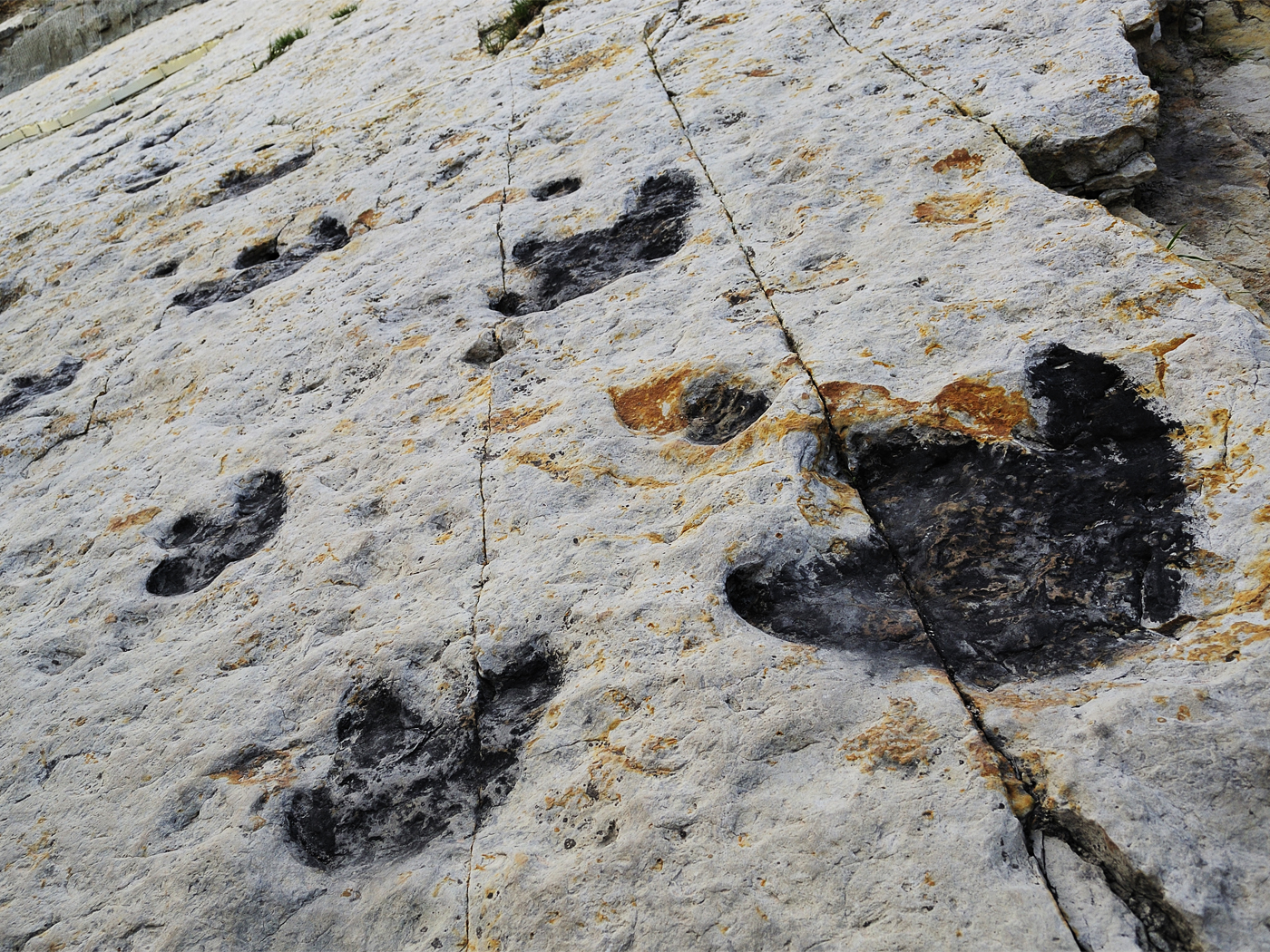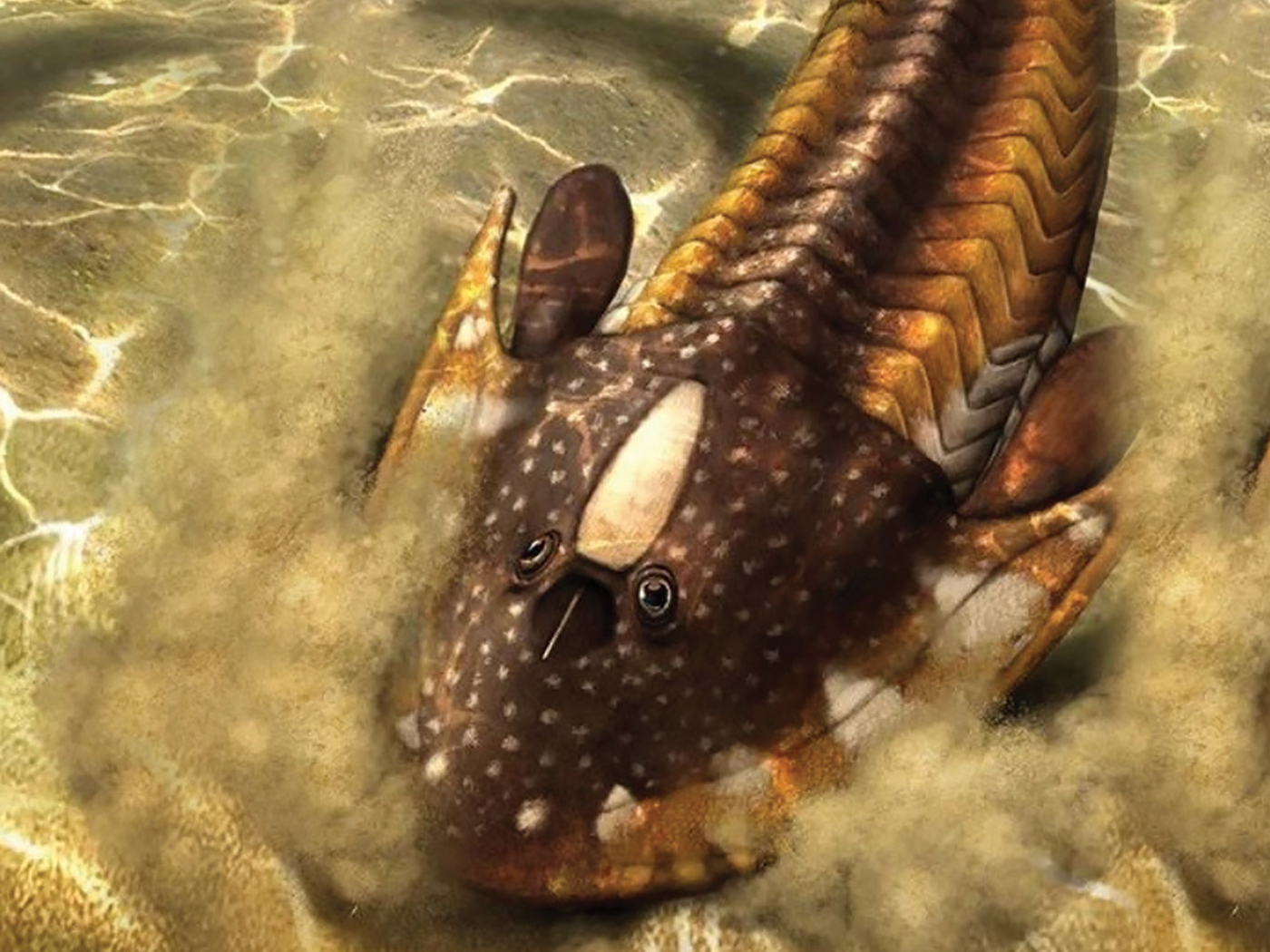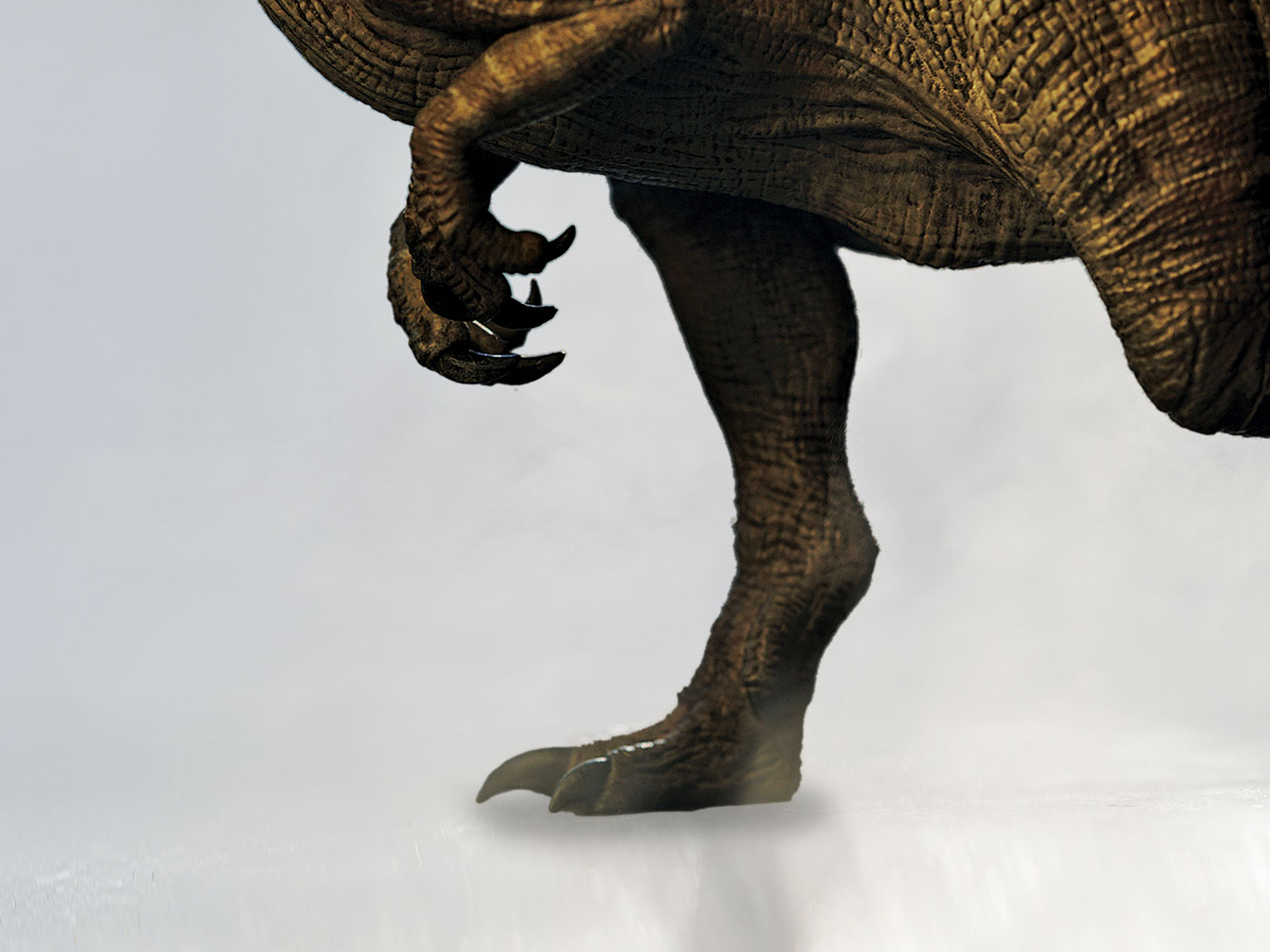National Geographic Society is widely known as one of the most important promoters of the theory of organic evolution in the eyes of the public. Louis and Richard Leakey might have remained obscure paleoanthropologists except that their research on fossil evidence for human evolution was generously funded and heavily publicized by the National Geographic Society. Now the idea that birds are simply feathered theropod dinosaurs is the prominent evolutionary doctrine being promoted by the society.
Recent scientific research funded by National Geographic concerns what have been called "feathered dinosaurs" from lower Cretaceous strata of the Liaoning province in China. This new research program appears to be directed specifically at changing what the world believes about dinosaurs and their relationship to birds. A recent episode concerns the discovery and promotion of a particular Chinese fossil appearing to be a combination of bird and theropod dinosaur. Is it actually evolution's missing link between dinosaurs and birds? The episode concerning the fossil provides an extraordinary peek into the peculiar ideology and journalistic slant of a cadre of zealous scientists and the National Geographic Society that promotes them.
The Fossil's Discovery and Interpretation
On October 15, 1999, at a press conference in Washington D.C., the National Geographic Society announced the discovery and interpretation of the newest fossil called Archaeoraptor liaoningensis (meaning "ancient bird of prey from Liaoning").1 The press conference coincided with the November 1999 issue of National Geographic magazine and its article "Feathers for T. rex? New birdlike fossils are missing links in dinosaur evolution."2 The turkey-sized animal according to National Geographic ". . . is a true missing link in the complex chain that connects dinosaurs to birds. It seems to capture the paleontological 'moment' when dinosaurs were becoming birds."3 According to their press release, the anatomy of Archaeoraptor proves a feathered theropod dinosaur was capable of flight. The features include:
. . . a very advanced, birdlike shoulder structure, wishbone and big sternum—all indicating the animal was a powerful flier. Remains of feathers surround the specimen's bones. Yet its tail was strikingly similar to the stiff tails of a family of predatory dinosaurs known as dromaeosaurs, which includes the "raptors" of Jurassic Park.4
Several remarkable characteristics are noted. "This mix of advanced and primitive features is exactly what scientists would expect to find in dinosaurs experimenting with flight,"5 and "It's a missing link between terrestrial dinosaurs and birds that could actually fly."6 The arms of the fossil are quite wing-like, much longer than would be expected of a normal theropod dinosaur.
A two-page photograph of the rock slab containing Archaeoraptor appears with the article.7 The description and interpretation of Archaeoraptor was accomplished by two scientists funded by National Geographic: Stephen Czerkas of the Dinosaur Museum (Monticello, Utah) and Xing Xu of the Institute of Vertebrate Paleontology and Paleoanthropology (Beijing, China). The fossil was studied under normal light, uv light, CAT scan, and x-ray. Czerkas said, "It's a missing link that has the advanced characters of birds and undeniable dinosaurian characters as well." Czerkas was also commissioned by National Geographic to produce a life-size sculpture of Archaeoraptor. Both Czerkas and Xu appeared at the news conference on October 15, 1999, in Washington and endorsed the authenticity of the fossil. Also endorsing the fossil and its "feathered dinosaur" interpretation in Washington was Philip J. Currie of the Royal Tyrrell Museum of Paleontology (Drumheller, Alberta). Currie is widely known for his belief that theropod dinosaurs had feathers and were warm-blooded creatures.8 The National Geographic magazine boldly states the implications: ". . . we can now say that birds are theropods just as confidently as we say that humans are mammals. Everything from lunch boxes to museum exhibits will change to reflect this revelation."9
The public impact of the National Geographic Society promotion of Archaeoraptor has been enormous. Not only has the fossil appeared in the magazine, but in the public display in "Explorers Hall" (October 15, 1999, to January 18, 2000, at NGS headquarters in Washington) and on the TV program, "National Geographic Explorer" (November 14, "Dinosaurs Take Wing" on CNBC). Canadian Broadcasting Corporation (CBC) televised a lengthy interview concerning the fossil with Philip Currie. All the major news services carried the story from National Geographic worldwide. Numerous Internet websites report the fossil, including several children's educational sites. These stories circulated just after the Kansas State Board of Education in August adopted new science standards that deleted references to "macroevolution."
The Fraud is Exposed
Numerous scientists voiced skepticism about both the claims and even the fossil itself. In particular, two scientists played important roles in asking questions that grounded Archaeoraptor. Storrs L. Olson, the curator of birds at the Smithsonian Institution wrote:
With the publication of "Feathers for T. rex?" by Christopher P. Sloan in its November issue, National Geographic has reached an all-time low for engaging in sensationalistic, unsubstantiated tabloid journalism.10
Specifically, Olson had been asked by the National Geographic photographer before the October 15, 1999, news release to examine the photographs of the three Chinese fossils that later went on public display and before the article was published in the National Geographic. Olson wrote, "More importantly, however, none of the structures illustrated in Sloan's article that are claimed to be feathers have actually been proven to be feathers." Larry D. Martin, paleontologist at the University of Kansas specializing in bird fossils, also could not see feathers.11 Furthermore, Martin's examination of photographs (not the actual rock slab of Archaeoraptor) caused him to propose the hypothesis that the pieces of the fossil had been assembled and could include more than one animal.12 The dinosaur-looking tail hardly seemed to go with the bird-looking body. Furthermore, a close inspection of the photos indicated that bones were missing between the tail and the body.
To seal the matter, upon his return to China, Xing Xu knew that the authenticity of Archaeoraptor could be confirmed if the counterpart of the fossil slab could be located. The fossil had been discovered when an original slab had been split open, and only one side of the slab had been used by the National Geographic Society. Remarkably, Xu is reported to have found the counterpart slab in a Chinese collection, but it did not authenticate the assembly on display at the National Geographic Society.13 It appears that two separate fossils had been joined together. Stephen Czerkas also admitted evidence that the Chinese fossil hunters who found the specimen glued sections together,14 but he still holds that the tail may go with the body of the fossil.15 Philip Currie could no longer accept the authenticity of Archaeoraptor and expressed true remorse for having been duped.16 A science news writer described the situation in January 2000:
Red-faced and downhearted, paleontologists are growing convinced that they have been snookered by a bit of fossil fakery from China. The "feathered dinosaur" specimen that they recently unveiled to much fanfare ap-parently combines the tail of a dinosaur with the body of a bird, they say.17
Conclusion
The events surrounding Archaeoraptor provide a rare peek into the ideological and journalistic slant that can be placed upon public promotion of a missing link. Sloan's statement, ". . . we can now say that birds are theropods just as confidently as we say that humans are mammals"18 is the editor's unfounded assertion, designed to sway public perception, not a statement of a scientist documented with facts. Editorial propaganda needs to be countered with attention to detail and empirical evidence. Storrs Olson at the Smithsonian Institution may have the best analysis of lessons learned from the Archaeoraptor affair:
The idea of feathered dinosaurs and the theropod origin of birds is being actively promoted by a cadre of zealous scientists acting in concert with certain editors at Nature and National Geographic who themselves have become outspoken and highly biased proselytizers of the faith. Truth and careful scientific weighing of evidence have been among the first casualties in their program, which is now fast becoming one of the grander scientific hoaxes of our age—the paleontological equivalent of cold fusion.19
Recently, another "Chinese fossil" published in Nature magazine has been questioned.20 Thus, as often occurs when "proof" for evolution is revealed in the media, especially before careful description of the claim appears in the scientific literature, the evidence is overstated or, in this case, fraudulent. Sometimes time and careful study is all it takes to disprove such "proofs."
References
1 NGS press release of October 15, 1999, contact persons Barbara Moffet and Ellen Siskind, posted on Internet at URL http://www.nationalgeographic.com/events
/releases/pr991015.html.
2 C. P. Sloan, "Feathers for T. rex? New birdlike fossils are missing links in dinosaur evolution." National Geographic 196:98-107, November 1999.
3 NGS press release October 15, 1999.
4 NGS press release October 15, 1999.
5 NGS press release October 15, 1999.
6 Sloan, 1999, p. 100, quoting paleontologist Stephen Czerkas.
7 Sloan, 1999, pp. 100-101.
8 J. Qiang, P. J. Currie, M. A. Norell and J. Shu-An, "Two feathered dinosaurs from northeastern China." Nature 393:753-761, 1998.
9 Sloan, 1999, p. 102.
10 Storrs L. Olson, open letter dated November 1, 1999, to Peter Raven at National Geographic Society. Peter Raven is the senior scientist at NGS.
11 Olson, open letter dated November 1, 1999.
12 R. Monastersky, "Smuggled Chinese dinosaur to fly home" Science News 156:328, November 20, 1999.
13 R. Monastersky, "All mixed up over birds and dinosaurs," Science News 157:38, January 15, 2000.
14 Monastersky, 1999.
15 Monastersky, 2000.
16 Monastersky, 2000.
17 Monastersky, 2000.
18 Sloan, 1999, p. 102.
19 Olson, open letter dated November 1, 1999.
20 Zhonge Zhou, curator of birds at the Institute of Vertebrate Paleontology and Paleoanthropology in Beijing, is quoted by USA Today (February 1, 2000, p. 2A) as claiming that a tail was added to a fossil pterosaur from Liaoning published by Kevin Padian of the University of California at Berkeley in the prestigious British science journal Nature 398:573,574, April 15, 1999.
* Dr. Austin is Chairman of the Geology Department in the ICR Graduate School.




















